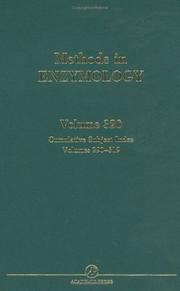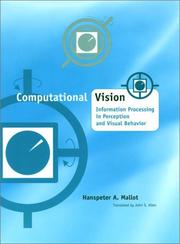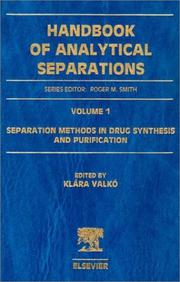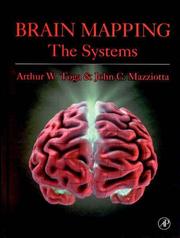| Listing 1 - 10 of 68 | << page >> |
Sort by
|

ISBN: 0231119755 Year: 2000 Publisher: New York (N.Y.): Columbia university press
Abstract | Keywords | Export | Availability | Bookmark
 Loading...
Loading...Choose an application
- Reference Manager
- EndNote
- RefWorks (Direct export to RefWorks)

ISBN: 0813828058 Year: 2000 Publisher: Ames (Iowa) : Iowa state university press,
Abstract | Keywords | Export | Availability | Bookmark
 Loading...
Loading...Choose an application
- Reference Manager
- EndNote
- RefWorks (Direct export to RefWorks)
Book
ISBN: 9786611765750 Year: 2000 Publisher: [Place of publication not identified] Springer Pub Co
Abstract | Keywords | Export | Availability | Bookmark
 Loading...
Loading...Choose an application
- Reference Manager
- EndNote
- RefWorks (Direct export to RefWorks)
Psychotherapy --- Behavioral Disciplines and Activities --- Investigative Techniques --- Psychology --- Methods --- Psychotherapy. --- Behavioral Disciplines and Activities. --- Investigative Techniques. --- Psychology. --- Methods.

ISBN: 0121822214 9780121822217 Year: 2000 Volume: 320 Publisher: San Diego (Calif.) : Academic press,
Abstract | Keywords | Export | Availability | Bookmark
 Loading...
Loading...Choose an application
- Reference Manager
- EndNote
- RefWorks (Direct export to RefWorks)
Amino Acids, Peptides, and Proteins --- Enzymes and Coenzymes --- Clinical Laboratory Techniques --- Investigative Techniques --- Chemicals and Drugs --- Analytical, Diagnostic and Therapeutic Techniques and Equipment --- Cytological Techniques --- Enzymes --- Proteins --- Gene Products, Protein --- Gene Proteins --- Protein Gene Products --- Proteins, Gene --- Biocatalysts --- Cytologic Technics --- Cytological Technic --- Cytological Technics --- Cytological Technique --- Technic, Cytological --- Technics, Cytological --- Technique, Cytological --- Techniques, Cytological --- Cytologic Technic --- Technic, Cytologic --- Technics, Cytologic --- Cell Biology --- Investigative Technics --- Investigative Technic --- Investigative Technique --- Technic, Investigative --- Technics, Investigative --- Technique, Investigative --- Techniques, Investigative --- Diagnoses and Laboratory Examinations --- Diagnosis, Laboratory --- Laboratory Diagnosis --- Laboratory Examinations and Diagnoses --- Laboratory Techniques, Clinical --- Clinical Laboratory Technique --- Diagnoses, Laboratory --- Laboratory Diagnoses --- Laboratory Technique, Clinical --- Technique, Clinical Laboratory --- Techniques, Clinical Laboratory --- Coenzymes and Enzymes --- methods --- Subject headings --- Biotechnology --- Bibliography --- Indexes
Book
Year: 2000 Publisher: [Place of publication not identified] Academic Press
Abstract | Keywords | Export | Availability | Bookmark
 Loading...
Loading...Choose an application
- Reference Manager
- EndNote
- RefWorks (Direct export to RefWorks)
Enzymes --- Biochemistry --- Amino Acids, Peptides, and Proteins. --- Enzymes and Coenzymes. --- Clinical Laboratory Techniques. --- Investigative Techniques. --- Cytological Techniques. --- Enzymes. --- Proteins. --- Analysis --- Technique

ISBN: 0262133814 0262278952 1423727525 9780262278959 9780262133814 Year: 2000 Publisher: Cambridge, Mass. : MIT Press,
Abstract | Keywords | Export | Availability | Bookmark
 Loading...
Loading...Choose an application
- Reference Manager
- EndNote
- RefWorks (Direct export to RefWorks)
This text provides an introduction to computational aspects of early vision, in particular, color, stereo, and visual navigation. It integrates approaches from psychophysics and quantitative neurobiology, as well as theories and algorithms from machine vision and photogrammetry. When presenting mathematical material, it uses detailed verbal descriptions and illustrations to clarify complex points. The text is suitable for upper-level students in neuroscience, biology, and psychology who have basic mathematical skills and are interested in studying the mathematical modeling of perception.
Artificial intelligence. Robotics. Simulation. Graphics --- Affective and dynamic functions --- Physiology of nerves and sense organs --- Vision --- Computational neuroscience --- Visual cortex --- Neurosciences informatiques --- Computer simulation --- Models, Biological --- Perception --- Models, Theoretical --- Mental Processes --- Investigative Techniques --- Psychological Phenomena and Processes --- Analytical, Diagnostic and Therapeutic Techniques and Equipment --- Psychiatry and Psychology --- Models, Neurological --- Visual Perception --- Human Anatomy & Physiology --- Health & Biological Sciences --- Neuroscience --- Perception, Visual --- Perceptions, Visual --- Visual Perceptions --- Model, Neurological --- Neurologic Model --- Neurological Model --- Neurological Models --- Neurologic Models --- Model, Neurologic --- Models, Neurologic --- Psychologic Processes and Principles --- Investigative Technics --- Investigative Technic --- Investigative Technique --- Technic, Investigative --- Technics, Investigative --- Technique, Investigative --- Techniques, Investigative --- Human Information Processing --- Information Processing, Human --- Experimental Model --- Experimental Models --- Mathematical Model --- Model, Experimental --- Models (Theoretical) --- Models, Experimental --- Models, Theoretic --- Theoretical Study --- Mathematical Models --- Model (Theoretical) --- Model, Mathematical --- Model, Theoretical --- Models, Mathematical --- Studies, Theoretical --- Study, Theoretical --- Theoretical Model --- Theoretical Models --- Theoretical Studies --- Perceptions --- Biological Model --- Biological Models --- Model, Biological --- Models, Biologic --- Biologic Model --- Biologic Models --- Model, Biologic --- Vision, Ocular --- Psychologic Processes --- Psychological Processes --- Phenomena, Psychological --- Processes, Psychologic --- Processes, Psychological --- Psychological Phenomenas --- Psychological Processe --- Computer Simulation --- Systems Theory --- Sensation --- Computational neuroscience. --- Computer simulation. --- NEUROSCIENCE/General --- NEUROSCIENCE/Visual Neuroscience --- Eyesight --- Seeing --- Sight --- Senses and sensation --- Blindfolds --- Eye --- Physiological optics --- Area striata --- Striate area --- Striate cortex --- Occipital lobes --- Computational neurosciences --- Computational biology --- Neurosciences

ISBN: 9780444500076 0444500073 9780080541099 0080541097 9786611048181 1281048186 Year: 2000 Volume: 1 Publisher: Amsterdam ; New York : Elsevier,
Abstract | Keywords | Export | Availability | Bookmark
 Loading...
Loading...Choose an application
- Reference Manager
- EndNote
- RefWorks (Direct export to RefWorks)
Separation Methods in Drug Synthesis and Purification
Ethics and addiction --- Drugs --- Separation --- Purification --- Drug development. --- Drugs. --- Drugs--Separation. Drugs--Purification. --- Pharmaceutical chemistry. --- Purification. --- Separation. --- Separation (Technology). --- Synthesis. --- Pharmacology --- Investigative Techniques --- Chemistry --- Chemicals and Drugs --- Analytical, Diagnostic and Therapeutic Techniques and Equipment --- Natural Science Disciplines --- Biological Science Disciplines --- Disciplines and Occupations --- Chemistry, Pharmaceutical --- Chemistry Techniques, Analytical --- Pharmaceutical Preparations --- Pharmaceutic Preparations --- Pharmaceutical Products --- Pharmaceuticals --- Preparations, Pharmaceutical --- Drug --- Pharmaceutical --- Pharmaceutical Preparation --- Pharmaceutical Product --- Preparation, Pharmaceutical --- Preparations, Pharmaceutic --- Product, Pharmaceutical --- Products, Pharmaceutical --- Drug Dosage Calculations --- Analytical Chemistry Methods --- Analytical Chemistry Techniques --- Analytical Chemistry Method --- Analytical Chemistry Technique --- Chemistry Method, Analytical --- Chemistry Methods, Analytical --- Chemistry Technique, Analytical --- Method, Analytical Chemistry --- Methods, Analytical Chemistry --- Technique, Analytical Chemistry --- Techniques, Analytical Chemistry --- Chemistry, Pharmaceutic --- Pharmaceutic Chemistry --- Pharmaceutical Chemistry --- Medicinal Chemistry --- Chemistry, Medicinal --- Biologic Sciences --- Biological Science --- Science, Biological --- Sciences, Biological --- Biological Sciences --- Life Sciences --- Biologic Science --- Biological Science Discipline --- Discipline, Biological Science --- Disciplines, Biological Science --- Life Science --- Science Discipline, Biological --- Science Disciplines, Biological --- Science, Biologic --- Science, Life --- Sciences, Biologic --- Sciences, Life --- Natural Sciences --- Physical Sciences --- Discipline, Natural Science --- Disciplines, Natural Science --- Natural Science --- Natural Science Discipline --- Physical Science --- Science, Natural --- Science, Physical --- Sciences, Natural --- Sciences, Physical --- Investigative Technics --- Investigative Technic --- Investigative Technique --- Technic, Investigative --- Technics, Investigative --- Technique, Investigative --- Techniques, Investigative --- Pharmacologies --- pharmacology --- Drugs - Separation --- Drugs - Purification --- Separation (Technology) --- Analysis. --- Chemical separations --- Separation processes --- Separation science --- Separation technologies --- Separations, Chemical --- Analytical chemistry --- Chemistry, Technical --- Technology --- Chemistry, Medical and pharmaceutical --- Drug chemistry --- Medical chemistry --- Medicinal chemistry --- Pharmacochemistry --- Pharmaceutical analysis --- Development of drugs --- New drug development --- Pharmacy --- Adulteration and analysis --- Development --- Chemistry, Analytic.
Book
Year: 2000 Publisher: New York : [Piscataqay, New Jersey] : IEEE Press, IEEE Xplore,
Abstract | Keywords | Export | Availability | Bookmark
 Loading...
Loading...Choose an application
- Reference Manager
- EndNote
- RefWorks (Direct export to RefWorks)
Many recently improved medical diagnostic techniques and therapeutic innovations have resulted from physiological systems modeling. This comprehensive book will help undergraduate and graduate students and biomedical scientists to gain a better understanding of how the principles of control theory, systems analysis, and model identification are used in physiological regulation. Ample Simulink? and MATLAB? examples throughout the text and posted at an IEEE FTP site will provide you with a hands-on approach for exploring modeling and analysis of biological control systems. You will learn about classical control theory and its application to physiological systems, and contemporary topics and methodologies shaping bioengineering research today. Discussions on the latest developments in system identification, optimal control, and nonlinear dynamical analysis will keep you up-to-date with recent bioengineering advances. From modeling and stability analysis to feedback control in physiological regulatory mechanisms, Physiological Control Systems provides an in-depth study of key bioengineering principles that is simply unmatched in the field. An Instructor Support FTP site is available from the Wiley editorial department: ftp://ftp.ieee.org/uploads/press/hoo.
Health Occupations --- Models, Theoretical --- Engineering --- Biological Science Disciplines --- Biomedical Engineering --- Models, Biological --- Physiology --- Technology, Industry, and Agriculture --- Natural Science Disciplines --- Investigative Techniques --- Disciplines and Occupations --- Analytical, Diagnostic and Therapeutic Techniques and Equipment --- Technology, Industry, Agriculture --- Human Anatomy & Physiology --- Health & Biological Sciences --- Health Occupations. --- Models, Theoretical. --- Engineering. --- Biological Science Disciplines. --- Biomedical Engineering. --- Models, Biological. --- Physiology. --- Technology, Industry, and Agriculture. --- Natural Science Disciplines. --- Investigative Techniques.

ISBN: 9780126925456 0126925453 9780080528274 0080528279 Year: 2000 Publisher: [Place of publication not identified] Academic
Abstract | Keywords | Export | Availability | Bookmark
 Loading...
Loading...Choose an application
- Reference Manager
- EndNote
- RefWorks (Direct export to RefWorks)
Brain mapping has forever altered and extended our understanding of the systems of the brain. The integrative capacity of brain maps enables the inclusion of a diverse array of observations and experimental results. Maps are used to describe brain structure, function, and connectivity, to catalog the ever-expanding knowledge base of human and animal nervous systems, to compare healthy tissue with diseased tissue, and to show detailed subsystems and circuits. Brain Mapping: The Systems is a compilation of the current research and developments in brain mapping. This book, the second in a series, provides an encyclopedic survey of brain maps characterizing the specific systems of the brain. It is a natural companion to Brain Mapping: The Methods because it describes the use of these techniques to create maps of the normal brain. It is an essential resource for all scientists, clinicians, and students interested in brain mapping. Key Features * Brings together the latest developments in brain mapping in one volume * Provides a detailed and chronological perspective of the field * Progresses from descriptions of underlying anatomic framework for mapping primary functional systems to more complex cognitive and emotional behaviors * Includes numerous full-color illustrations for comparing and contrasting brain structure and function * Allows for the integration of disparate information about the brain.
Brain mapping --- Brain Mapping --- Brain --- Magnetic Resonance Imaging --- methods --- anatomy & histology --- physiology --- Diagnostic Imaging --- Tomography --- Central Nervous System --- Investigative Techniques --- Diagnostic Techniques, Neurological --- Diagnostic Techniques and Procedures --- Analytical, Diagnostic and Therapeutic Techniques and Equipment --- Nervous System --- Diagnosis --- Anatomy
Book
Year: 2000
Abstract | Keywords | Export | Availability | Bookmark
 Loading...
Loading...Choose an application
- Reference Manager
- EndNote
- RefWorks (Direct export to RefWorks)
Governmental investigations --- Misconduct in office --- International Criminal Investigative Training Assistance Program (U.S.) --- United States. --- Officials and employees --- Professional ethics. --- Management. --- United States --- Professional ethics --- Political science --- Business & economics --- Law
| Listing 1 - 10 of 68 | << page >> |
Sort by
|

 Search
Search Feedback
Feedback About UniCat
About UniCat  Help
Help News
News